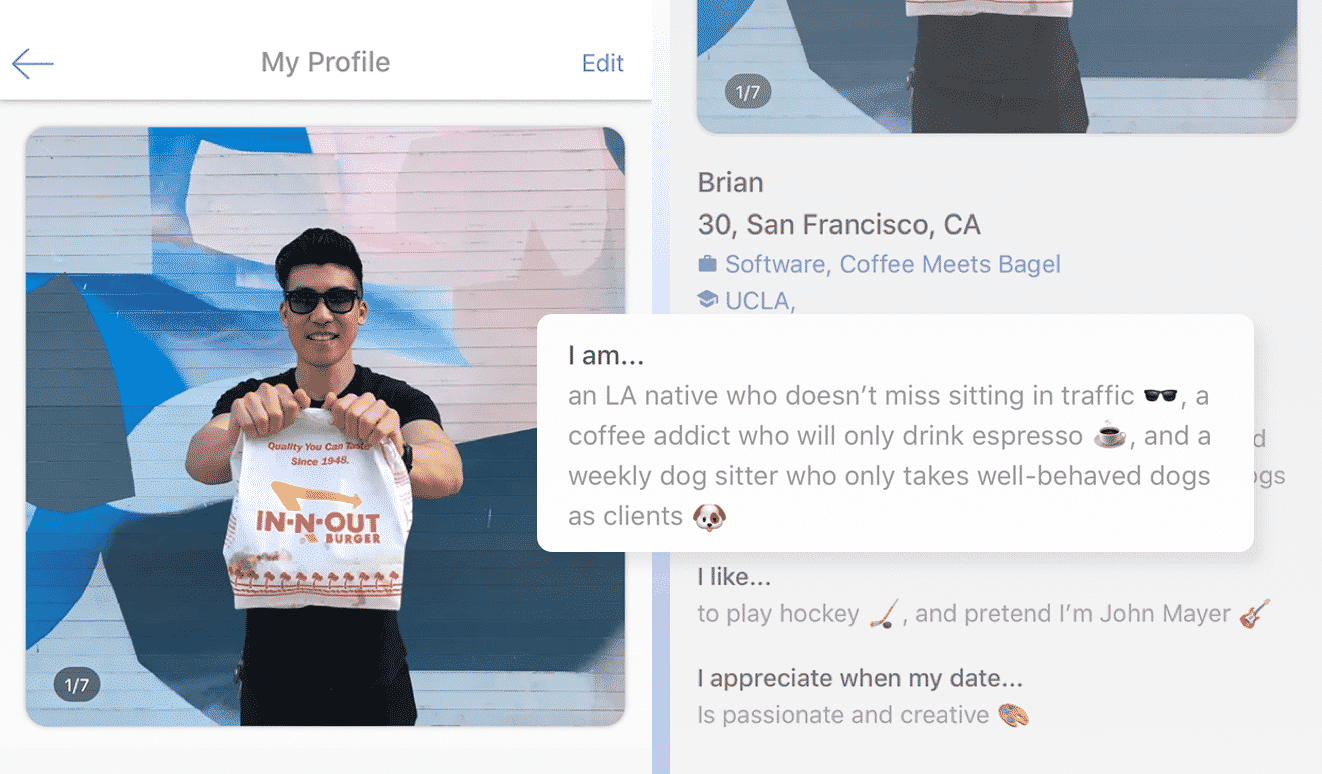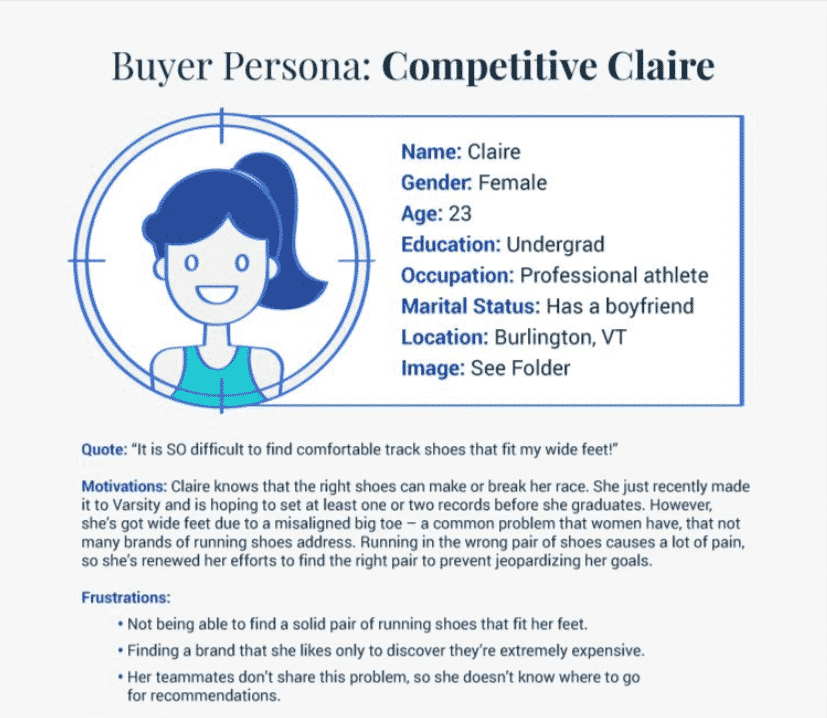Riddle me this: ❓
How well do you know your (buying) audience?
If the answer is “Not well” or “I’m guessing about a lot of things,” do you know how to close that knowledge gap?
And, once you have that knowledge, do you know what tools you can use to ensure you speak to them consistently on a level that hits them in the heart/gut/brain?
Here’s the answer key:
- Research will help you understand your audience (particularly, live market research).
- Business personas will help you coalesce that knowledge into a tool you can use to stay on-message, on-brand, on-point, no matter what.
A business persona (also called an “audience persona” or “buyer persona,” often shortened to plain ol’ “persona”) is a marketing tool that outlines and illustrates a fictional version of your ideal customer from a composite of real audience data.
Why does it matter, especially as you plan a content strategy and start SEO blogging?
How do you create a business persona that is accurate AND helpful?
Let’s find out.
What Is a Business Persona? A Deeper Explanation
Imagine, if you will, a dating profile that over-shares. 👀 You get the basics, such as the person’s age, gender, geographic location, and interests, but also deep information like income, their job title and duties, fears and challenges, goals and dreams, and more.
If the point of a dating profile is to give you a general idea of who a person is so you can decide whether you’d want to date them…

Source: Coffee Meets Bagel
A business persona gives you that same overview, but with a goal to understand how you can relate to your ideal customer and solve their problems so they’ll ultimately end up as your real customer.
And, by the way, every persona is different because every business is different. Sure, there are different types of buyer personas, but that’s because each business has a different type of customer they’re targeting.
Don’t worry too much about types and instead focus on your ideal customer and who they are. That will create the best persona for your brand.

This should be a cornerstone piece of any content strategy. A few stats:
- Using B2B buyer personas has been proven to make your website 2-5x better – more effective and easier to use.
- Using personas to inform and improve personalization in your marketing increases conversions by 10% and email click-through rates by 14%.
How? Personas help you pinpoint a defined audience – and without a defined audience, you’ll never get anywhere with your brand. You need to KNOW, without a doubt, that your audience needs what you’re selling. And you can’t know that without knowing THEM. This is called product-market fit.
Your audience should be your guiding light for everything as you move through the process of brand building. I repeat, e-v-e-r-y-t-h-i-n-g.
Therefore, your business persona is a key tool. It will help you crystallize your knowledge about them and use it strategically moving forward.
How do you create a business persona? Start with research.
How to Create an Accurate, Targeted Business Persona
1. Check Existing Market Research
Research, my friends. To get the knowledge you need, you have to put in the work.
Specifically, one avenue many people traverse to begin compiling audience data is quantitative market research. This is data that can be quantified in numbers or statistics and may be a very helpful starting point (especially if you’re brand-new to your industry, have never run a business, and don’t have an established audience yet).
To start, look at public information on your industry or demographic of interest. For U.S. brands, you’ll find loads of information in places like the Bureau of Labor & Statistics and the U.S. Census.
You can also check market reports from reputed agencies like Pew, or even conduct your own informal surveys if you have an existing audience on social media.
Finally, look in places where your audience gathers online and discusses their pain points, such as Facebook groups, Reddit, message boards, Instagram, LinkedIn, etc. Study who is posting and gather basic data.
What you might learn:
- Their geographic location – are most of your people based in cities? Suburbia? Are they international? Local?
- Age, gender, & marital status – are you talking to middle-aged single women? Young moms in their 20s? Married people 55+?
- Socioeconomic status – are they homeowners? Renters? What do they earn annually?
- Company size – are they a company of one? Of five to 10? Do they work for a multi-national conglomerate with hundreds of employees?
This type of research will help you understand broad, basic facts about your audience. If anything, you’ll reinforce what you already know about your ideal prospects – which is great! You’re on the right track, and that’s important to prove as you continue building.
Now it’s time to drill down to find the deeper pain points your ideal audience shares.
2. Do Live Market Research on Your Ideal Business Persona
All the research in the world won’t provide the same kind of deep insights as talking to a real, live human.
That’s why I often prioritize live market research over simply studying data.
It’s about conversations. It’s about listening. It’s about letting your ideal prospect explain in their own words exactly who they are, what they do, and what they need from your brand.
This can inform your entire business persona!
Why?
Because if you can reach just ONE person on a gut-heart-brain level with your offer, you’ll succeed. 🤗💓🧠
Your marketing will be laser-targeted, which is what you want – to push away the people who ultimately will never buy, and draw in the people who will.
Here’s a basic overview of how to do live market research and use it to create an accurate, powerful persona:
End goal: 3-5 live calls (via Zoom, phone, etc.) with people who have an active interest in your offer, willing to share their experiences.
👉 Remember: You’re not selling anything during these calls. This is about information-gathering only.
Steps:
- Broadcast a market research request to your social media followers (via Instagram Stories, Facebook newsfeed, or LinkedIn status updates – all good choices).
- Mention what pain points you want to discuss with them and that the call will be free
- Offer help/advice in exchange for their time/information
- Keep the time to a set limit (e.g., 20 minutes, 30 minutes, one hour)
- Create a script to follow for each call so you stay on track.
- Make sure you get the essential information: WHO are they? WHAT do they do? WHAT are their pain points concerning XYZ problem?
- Send each interested person your calendar link so they can book a time to speak with you.
3. Take Detailed Notes
During the information-gathering phase, especially during live market research calls, remember to take copious notes on everything (you can also choose to record your calls and go over them later – always ask your subject’s permission before recording a call).
Note key details that stand out. For calls in particular:
- Is there a word or phrase the person keeps repeating? Write it down.
- Take detailed notes on how each person describes themselves. This wording will inform key details of your business persona.
- Note the particular words and phrases each person uses to describe their pain points.
- Do more listening/note-taking than talking!
4. Look for Patterns & Commonalities
After all your research is done and your live calls are over, it’s time to look at your notes and study them for patterns and commonalities.
When you find a common thread running through your research, that should go straight into your business persona.
Silly example: All the people on your live calls talked about their deep abiding love for pizza. 🍕
Record it! Your ideal client loves pizza. (In place of “loves pizza,” insert any detail relevant to your industry.) Any commonality that pops up repeatedly is a detail you need to remember.
5. Put It All Together
By now, your business persona should be taking shape.
The research you did at the beginning reinforced that you’re targeting the correct demographic, and the live calls you conducted revealed deeper pain points that most of your prospects share.
Put it all together in your business persona document in the format of that dating profile we discussed earlier. Who is this person? What’s their job? Where do they live? What does their family look like? What are their fears and challenges? What do they love/hate?
Once you’re done compiling data, you’ll have a laser-focused, knife-sharp tool you can use as you build both a content strategy and your business.
An Accurate Business Persona Will Help You Avoid a Major, Common Entrepreneur Mistake
I’ve harped on and on about research during an entire blog for a reason.
Research means the difference between an accurate persona and one that’s way off the mark.
And accurate personas matter. Without accurate information about your buyers, you’ll fail to create an offer/service that truly serves them.
Product-market fit is about selling something your market actually needs, that satisfies them.
Those needs will be an utter mystery to you without great research guiding the tools you use to build your brand. 🔍
Stay one step ahead with WorkMind’s blogs, crafted to deliver real results for students and professionals. See what we have in store for you.